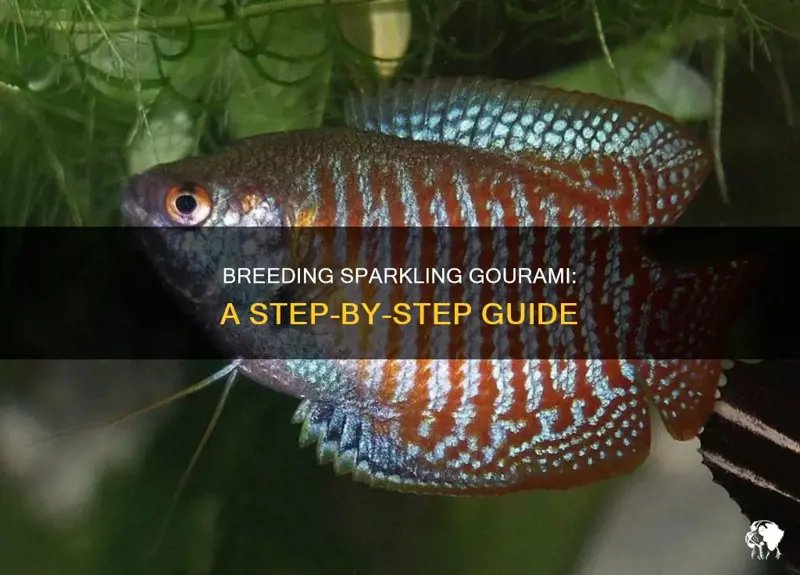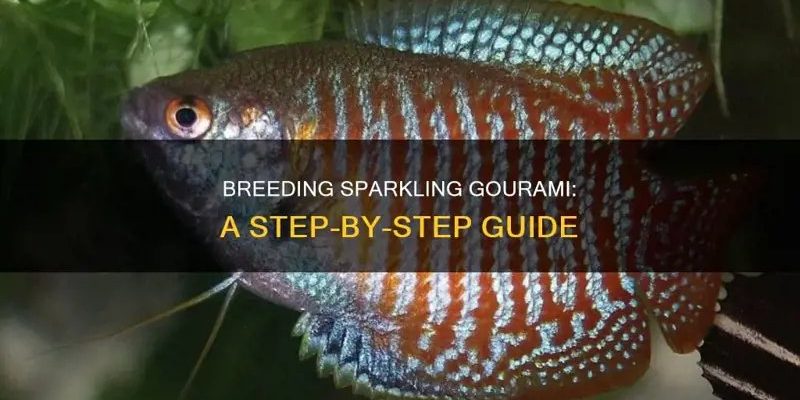
Here’s the thing: breeding gourami isn’t as complicated as it might sound. With the right setup and some patience, you’ll be well on your way to raising little fry (that’s what baby fish are called!) in your home aquarium. In this guide, I’ll walk you through everything you need to know, from choosing the right tank environment to caring for the eggs and fry. So grab a cup of coffee, and let’s dive into the world of gourami breeding!
Choosing the Right Gourami Species
Before you set up a breeding environment, you need to choose the right gourami species. There are several popular types, including the Bubble Nest Gourami, Pearl Gourami, and Dwarf Gourami. Each has its unique charm:
- Bubble Nest Gourami
- Pearl Gourami: These are beautiful and relatively hardy fish, making them a favorite among beginners. They have a lovely iridescent look.
- Dwarf Gourami: If you’re short on space, these smaller gouramis are ideal. They’re vibrant and can add a splash of color to any tank.
You might be wondering how to choose. Honestly, think about your personal vibe. The Bubble Nest Gourami is great if you’re interested in a more active breeding process. If you want something simpler, the Dwarf Gourami might be your best bet.
Setting Up the Breeding Tank
Now that you’ve chosen your gourami species, it’s time to set up their breeding tank. This tank should be separate from your main one to provide a stress-free environment for the breeding pair. Here’s what you’ll need:
1. Tank Size: A 10-gallon tank is usually sufficient for breeding.
2. Water Conditions: Gouramis prefer slightly acidic to neutral pH levels (around 6.5 to 7.5) and warm temperatures between 78°F and 82°F. A heater is essential to maintain this temperature.
3. Filtration: Use a gentle filter or sponge filter. Strong currents can stress the fish and disrupt the breeding process.
When setting up the tank, include floating plants like duckweed or java moss. These provide cover and are excellent for the males to perch on when building their bubble nests.
Introducing the Breeding Pair
Once the tank is ready, it’s time to introduce your breeding pair. Choose a healthy male and female; the males are typically more colorful and have longer fins, while the females tend to be rounder.
Here’s a straightforward approach to introducing them:
1. Acclimate Them: Slowly introduce the new fish to the tank to prevent shock. Float the bag in the tank for about 15 minutes, then gradually mix some tank water into the bag before releasing them.
2. Observe Their Behavior: Initially, they may display some aggression. The male will start to create his bubble nest while showing off. This is normal!
However, keep an eye out for serious aggression, as this can lead to injuries. If things get too rough, you may need to separate them temporarily.
The Breeding Process
Once the breeding pair is acclimated and comfortable, they’ll start the breeding process. The male gourami will build a bubble nest near the water’s surface. This is where the magic happens! Here’s how it unfolds:
1. Spawning: The male will entice the female to the nest, and they will embrace, releasing eggs that the male fertilizes. A single spawning can produce hundreds of eggs!
2. Egg Care: After spawning, the male will carefully gather the eggs into the bubble nest. He’s quite the doting dad, staying close to protect them from harm.
Keep the tank quiet and free from disturbances during this critical time.
Caring for the Eggs and Fry
Now that the eggs are in the bubble nest, it’s crucial to provide the right environment for them to hatch. Here’s what you need to do:
1. Lighting: Maintain low light, as bright lighting can stress the fish.
2. Temperature & Water Quality: Maintain the warm temperature and ensure the water is clean. Regular water changes (about 10-20%) will help keep the water quality high without disrupting the nest.
3. Hatching: The eggs usually hatch within 24-48 hours. After hatching, the fry will remain in the bubble nest for a few days while they absorb their yolk sac.
Once they start swimming freely, you can remove the male to avoid any aggressive behavior toward the fry.
Feeding the Fry
Once your fry are swimming around, feeding them becomes crucial. Gourami fry eat differently than adult fish, so here’s what you need to know:
1. First Foods: Start with infusoria or liquid fry food for the first few days. They are tiny and can’t eat larger foods yet.
2. Expanding Their Diet: After a week, you can introduce crushed flakes or baby brine shrimp. Be careful not to overfeed, as this can pollute the water.
As they grow, you can gradually introduce larger food options. Remember, patience is key as you watch your little gourami grow!
Maintaining a Healthy Environment
Keeping your breeding tank healthy is vital to ensure the fry thrive. Here are some tips to maintain the environment:
– Regular Water Testing: Regularly check the water’s pH, ammonia, nitrites, and nitrates using an aquarium test kit.
– Water Changes: Perform regular water changes to keep the tank clean. Just be careful not to disrupt the bubble nest or the fry.
– Monitor Growth: Keep an eye on the fry as they grow. If they seem stunted or unhealthy, carefully check your tank conditions or consult a local fish expert.
Maintaining a proper environment will help you enjoy a thriving batch of baby gouramis.
Breeding gourami can be a delightful and rewarding journey. From choosing the right species to caring for the tiny fry, each step has its own joy. Take your time and enjoy observing their unique behaviors throughout the breeding process. You’ll find that this experience isn’t just about raising fish; it’s about nurturing life and learning along the way.
So, whether you’re a first-time fish parent or an experienced aquarist, I hope this guide helps you successfully breed gourami at home. Now, all that’s left is to sit back and watch your underwater family grow!

